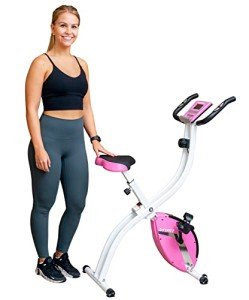11 Ways To Fully Redesign Your Gym Equipment For Legs
A Comprehensive Guide to Gym Equipment for Legs
The legs are among the largest muscle groups in the body, and they play a crucial role in movement, stability, and general strength. A well-rounded leg workout routine not just improves visual appeals but also adds to better athletic efficiency and practical strength in everyday activities. With a range of gym equipment readily available, picking the right tools can make a significant difference in attaining leg fitness goals. This article aims to check out the vital gym equipment for legs, their advantages, and some frequently asked questions regarding leg exercises.
Understanding the Importance of Leg Workouts
Leg exercises typically focus on the major muscle groups, including:
- Quadriceps: The front thigh muscles responsible for knee extension.
- Hamstrings: The back thigh muscles that aid in knee flexion and hip extension.
- Glutes: The major buttock muscles associated with hip stability and power generation.
- Calves: The muscles in the lower leg that facilitate ankle motion.
Including leg exercises into a fitness regimen is vital for achieving balance, strength, and functionality. Leg exercises contribute to:
- Improved athletic efficiency
- Boosted metabolism
- Increased joint stability
- Much better posture and balance
- Lowered danger of injury
Important Gym Equipment for Leg Workouts
When it pertains to gearing up a gym for effective leg training, specific makers and weights stick out. Below is a list of necessary gym equipment for legs, each serving unique functions.
1. Squat Rack
A squat rack is an essential tool for those serious about developing leg strength. It enables safe and efficient squats, targeting the quadriceps, hamstrings, glutes, and core. A squat rack can support different squat variations, such as front squats, back crouches, and overhead squats.
2. Leg Press Machine
The leg press machine is a versatile tool for targeting the quads, hamstrings, and glutes. This equipment uses a safer alternative to squats for individuals with back issues or those brand-new to leg exercises. Changing the weight on the leg press machine enables users to personalize their resistance according to their fitness level.
3. Smith Machine
Similar to a squat rack, the Smith machine provides directed support for a variety of exercises, consisting of squats, lunges, and even overhead presses. The fixed barbell enables preserving balance, making it ideal for beginners or those looking to securely lift heavier weights.
4. Leg Curl and Leg Extension Machines
These machines isolate the hamstrings and quadriceps, respectively. Look For Exercise Bikes curl machine targets the back of the thigh, while the leg extension machine focuses on the front. Including both in a leg regular guarantees comprehensive advancement of the thigh muscles.
5. Calf Raise Machine
The calf raise machine particularly targets the calf muscles. It allows users to perform either seated or standing calf raises effectively. Strong calves contribute to general leg strength and boost performance in activities like running and leaping.
6. Resistance Bands
Resistance bands are budget friendly, portable, and versatile tools best for including resistance to leg exercises. They can be used for various exercises such as leg abductions, monster walks, and lateral leg lifts. Resistance bands also offer a lower-impact alternative for beginners.
7. Dumbbells and Kettlebells
Dumbbells and kettlebells are fundamental equipment for any workout, consisting of leg workouts. They can be included into exercises such as lunges, crouches, and deadlifts, providing extra resistance and appealing supporting muscles.
8. Foam Roller
While not a main workout tool, a foam roller is important for post-workout healing. Rolling out the legs assists relieve muscle tightness and enhance flexibility, enabling better efficiency in future workouts.
Creating a Balanced Leg Workout Routine
A well-rounded leg workout ought to include a mix of strength training, stability workouts, and flexibility work. Here's a sample regimen that incorporates various equipment:
Warm-Up (5-10 minutes):
- Light cardio (e.g., brisk walking or cycling)
- Dynamic stretches (e.g., leg swings, walking lunges)
Strength Exercises:
- Squats (Barbell or Smith Machine)— 3 sets of 8-12 representatives
- Leg Press Machine— 3 sets of 8-12 representatives
- Leg Curl Machine— 3 sets of 10-15 representatives
- Calf Raises (using Calf Raise Machine or Dumbbells)— 3 sets of 12-15 representatives
Stability Exercises:
- Lunges (Dumbbells or Kettlebells)— 3 sets of 10-12 associates per leg
- Bulgarian Split Squats— 3 sets of 8-10 representatives per leg
Cool Down:
- Stretching workouts concentrated on the legs
- Foam rolling to alleviate stress
Often Asked Questions (FAQs)
Q1: How frequently should I train my legs?A1: It is advised to train legs at least when a week for basic fitness. Serious lifters might choose to work on legs 2-3 times a week, permitting adequate recovery between exercises.
Q2: Can I get leg workouts from bodyweight exercises?A2: Absolutely! Bodyweight workouts such as squats, lunges, and step-ups can successfully develop leg strength with no gym equipment.
Q3: What is the very best equipment for novices?A3: Beginners may benefit from beginning with resistance bands, dumbbells, and bodyweight workouts. Devices like the leg press and leg curl are also great options due to their directed movements.
Q4: Do I need to have a gym subscription to work out my legs?A4: No, while gym equipment provides specific benefits, you can produce an effective leg workout at home utilizing bodyweight workouts and items like resistance bands or dumbbells.
Q5: What are some safety ideas for leg workouts?A5: Always warm up before exercising, utilize proper form to prevent injury, and prevent raising excessively heavy weights until you're positive in your strategy.
Investing time and energy into leg workouts is critical for overall fitness, athletic efficiency, and daily function. With the right gym equipment and a structured approach, people can enhance their legs and enjoy the advantages of movement, stability, and strength that come with effective lower body muscles. Whether at a gym or home, the journey to more powerful legs starts with informed choices and constant effort.
